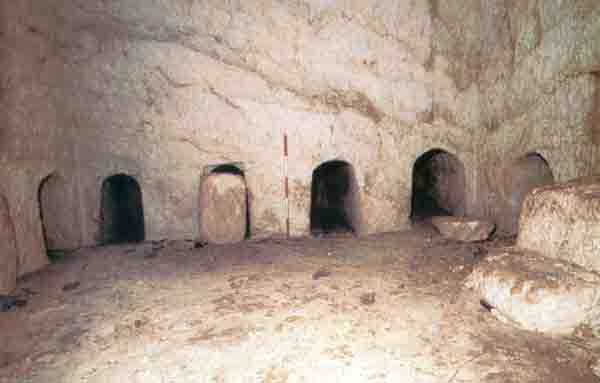Image Details

Courtesy Gideon Avni and Zvi Greenhut
Body-sized niches cut into the cave wall, called loculi (singular, loculus), were used for burials in the Second Temple period. The deceased was laid in the small chamber and the opening was stopped with a blocking stone, such as the one on the far wall in the photo. Typically 6 feet deep, 1.5 to 2 feet wide and 2 feet high, loculi also served as repositories for ossuaries, small stone boxes into which the deceased’s bones were placed after about a year. One ossuary found in this room (1-C) contained charred bones, evidence of use by Roman inhabitants of Jerusalem who commonly practiced cremation, forbidden to Jews, in the second and third centuries C.E.
